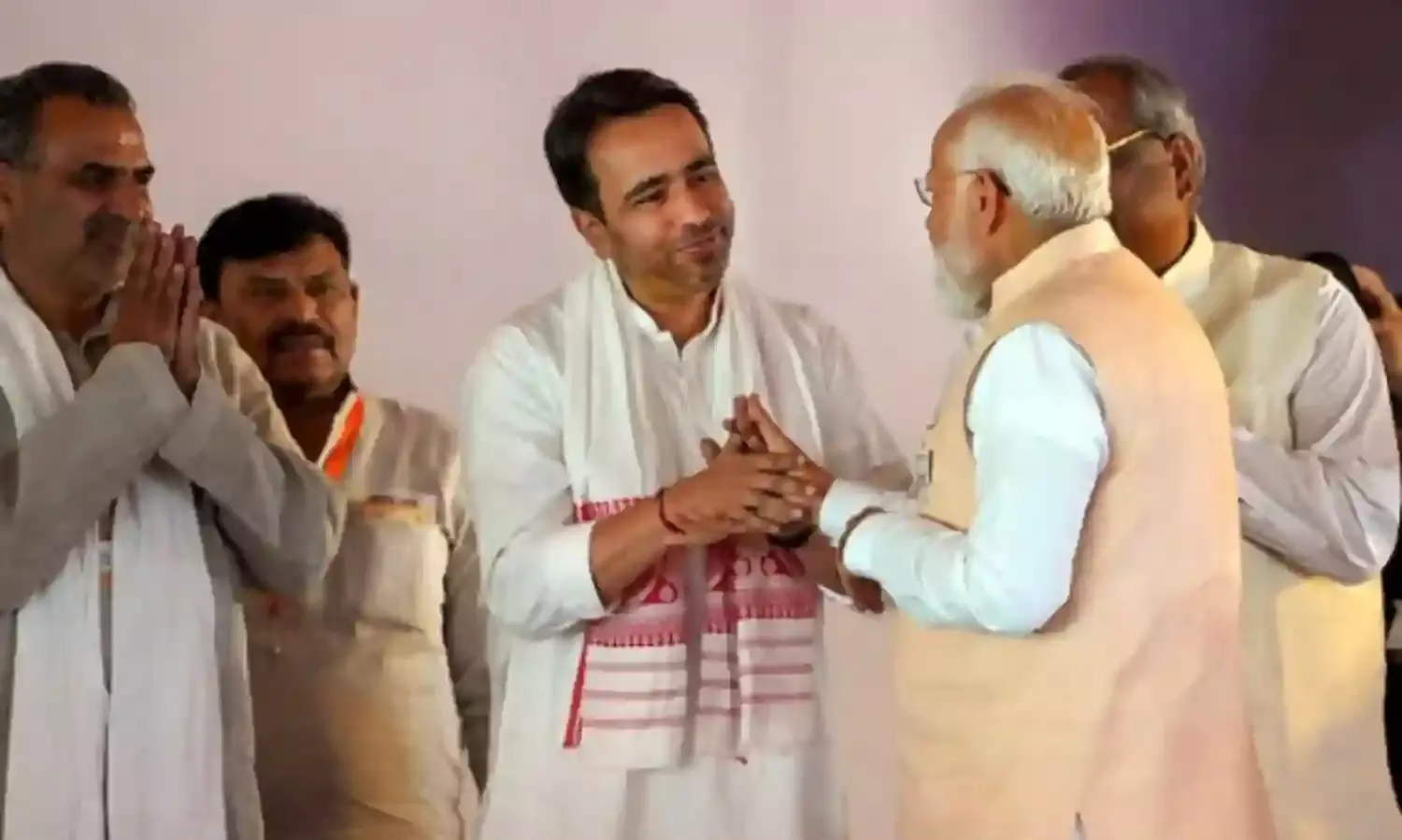
For Rashtriya Lok Dal (RLD) President Jayant Singh Chaudhary the Baghpat poll, during the second phase on April 26, is a litmus test for his political future. The first after his decision to join the Bharatiya Janata Party (BJP)-led National Democratic Alliance (NDA).
It is also the first time since 1977 that Bharat Ratna Former Prime Minister Chaudhary Charan Singh, or any of his family members are missing from the electoral fray.
Chaudhary, quit the I.N.D.I.A. bloc, and joined the NDA on the eve of the 2024 Lok Sabha election. It is not easy for him to explain this U-turn to the people of Baghpat, the region which had been the ‘karmabhoomi’ of his grandfather, who built his political legacy on the basis of Jat-Muslim unity.
Jat votes are the most dominant here, followed by Muslims. And any party having the support of both the communities can easily sail through.
However, for five years the RLD President had been relentlessly opposing the BJP on the ground. He opposed the saffron party on the issue of sugarcane prices, and supported the farmers’ agitation. During the 2022 Vidhan Sabha elections the RLD, in alliance with the Samajwadi Party (SP), wrested two of the five Assembly segments of the Baghpat Lok Sabha constituency from BJP.
Now, his hasty alliance with the BJP has not been too smooth at the grassroots levels. Cardres of the saffron party and RLD have not been able to build a satisfactory organic working relationship.
It is an interesting triangular fight in Baghpat, which includes five Vidhan Sabha constituencies spread over three districts Siwalkhas (Meerut), Chhaprauli, Baraut, Baghpat (Baghpat) and Modi Nagar in Ghaziabad. Of these, two Assembly segments of Siwalkhas, Chhaprauli are with the RLD, and the remaining three are with the BJP.
Baghpat is one of the two seats spared by the NDA for RLD in Uttar Pradesh. The RLD candidate is 63-year-old Raj Kumar Sagwan, a Jat retired teacher who is making his electoral debut. While he has been associated with the RLD for over four decades and is now the party’s national secretary, he has never fought elections.
Sagwan’s closest fight appears to be with the I.N.D.I.A. bloc candidate, SP’s 56-year old Amarpal Sharma, a Brahmin, who had won the 2012 Vidhan Sabha election on a BSP ticket from Sahibabad. The SP had initially chosen a Jat candidate but decided to change it on the last day.
The election posters of Sharma carry the photograph of Bharat Ratna Charan Singh, considered to be one of the icons of the SP. “We treasure the ideology of Chaudhary Charan Singh while the RLD has been usurped by the BJP”, a local SP worker said.
The Bahujan Samaj Party (BSP) has placed its bet on Praveen Bansal, a Bania, who is an advocate in Delhi High Court and had contested the Delhi elections.
As usual all the parties are depending on the support of their core voters plus the ‘biradari’ of the candidate. Interestingly, Malook Nagar, an influential Gujjar politician, who as BSP candidate won the Bijnor Lok Sabha seat in 2019 recently quit the BSP to join the RLD. He has been canvassing for Sagwan by holding meetings in Gujjar dominated villages of the constituency.
The RLD loyalist Amit Tomar is hopeful of Sangwan’s victory. “Here the fight in 2014 and 2019 was between the BJP and RLD. Now that the two parties have joined hands no one can beat them”. He admitted that there were some hiccups in the alliance but all is now well.
He, however, regretted that both Prime Minister Narendra Modi and Home Minister Amit Shah had decided not to campaign in the two constituencies of Bijnor and Baghpat that have been allotted the RLD.
A local teacher Rakesh Tyagi is, however, optimistic of the success of the INDIA alliance candidate. “Unfortunately, arithmetic does not always work in electoral politics. If the saffron party won and the RLD came second in both 2014 and 2019 it needs to be remembered that then, the RLD had the support of not only Jats, Yadavs but also Muslims and many other biradaris. Not this time,” Tyagi said.
Tyagi expects the I.N.D.I.A. alliance candidate to win as he is foresees SP’s Sharma of succeeding in garnering the support of the Brahmins, Tyagis, the core Yadav vote of the Samajwadi party as well as the sizeable Muslim population which will vote for whichever party is in a position to defeat the BJP.
Originally carved out of Sardhana Lok Sabha constituency in 1967, Baghpat has a dominating Jat presence followed by the Muslims said to be approximately 30 percent of the population. This Jat-Muslim unity, the backbone of Charan Singh’s politics, ensured his victory four successive times from 1977 to 1989.
His son and heir Chaudhary Ajit Singh contested every single election from Baghpat and won in 1991, 1996, 1996, 1999, 2004 and 2009. He only once lost to the BJP candidate Sompal in 1998.
However, the most humiliating defeat for Ajit Singh came in 2014, after the ascendancy of Narendra Modi, when he came third. The BJP’s Dr Satya Pal Singh won by cornering 28 percent of the votes, SP candidate Ghulam Mohammad came second while Ajit Singh came third getting merely 13.26 per cent of the votes.
In 2019 when his son Jayant Chaudhary was contesting against the same Dr Satya Pal Singh in an alliance with SP and BSP, he narrowly lost despite managing 48 percent of the votes. The BJP won by winning 50 percent of the votes.
This time it remains to be seen if the RLD-BJP arithmetic converts into electoral chemistry or if a non Jat would win the Baghpat seat for the first time.

